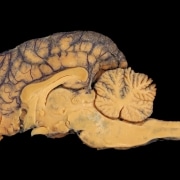Introduction
If it’s true that we often think of the cerebellum as a motor component of the central nervous system, a body of research is emerging as to showcase its non-motor roles. The cerebellum has been most recently shown to be of interest in the cases of ADHD, major depressive disorder, anxiety disorders and more.
This blog will delve into the contributions of the cerebellum in these three scenarios.
ADHD
There are three diagnostic criteria for ADHD:
- Attention deficit;
- Impulsiveness;
- Hyperactivity.
If some believe that ADHD is a dysfunction of the frontal-sub cortical pathway, structural and functional neuro imaging studies show changes in the prefrontal cortex, cingulum, basal ganglia, corpus callosum, and cerebral total volume. It is important to note that it is via motor development that these areas are supposed to sync and grow in use.
To add to this, there are multiple studies that have reported cerebellar changes in ADHD.
Castellanos et al. scanned adolescents diagnosed with ADHD (age 15-18) as well as healthy controls, to measure changes over a decade of brain anatomy and volume.
They found volumetric abnormalities with reduced cerebrum and cerebellum size that increased with age.
Major depressive disorder (MDD)
To be diagnosed with MDD, one needs to experience at least one depressive episode that may involve both motor and cognitive symptoms.
Cognitive symptoms consist of difficulty concentrating or indecisiveness. They have been often linked to the prefrontal cortex and limbic system in MDD.
To add to this, in addition to these brain regions, patients with MDD have also shown various abnormalities in the cerebellum.
Yucel et al. found a significantly smaller vermis, an area responsible for the regulation of emotion and cognition, in MDD patients compared to healthy controls.
When one considers that the vermis is responsible for posture and locomotion, it could be interesting to study the effects of a postural intervention on MDD.
Anxiety disorders
Anxiety disorders are associated with excessive fear and anxiety. These disorders are often accompanied by autonomic reactions, such as muscle tension and elevated heart rate.
It has been reported that impairment of the cerebellum could be linked to a few disorders where anxiety is present, such as post traumatic stress disorder (PTSD), generalized anxiety disorder (GAD), and social anxiety disorder (SAD).
Conclusion
In conclusion, if one considers the possible effect that the cerebellum can have on someone’s health, maybe we should consider the relative importance of proprioception for performance, and that, on so many levels.
https://www.ncbi.nlm.nih.gov/pmc/articles/PMC4419550/









